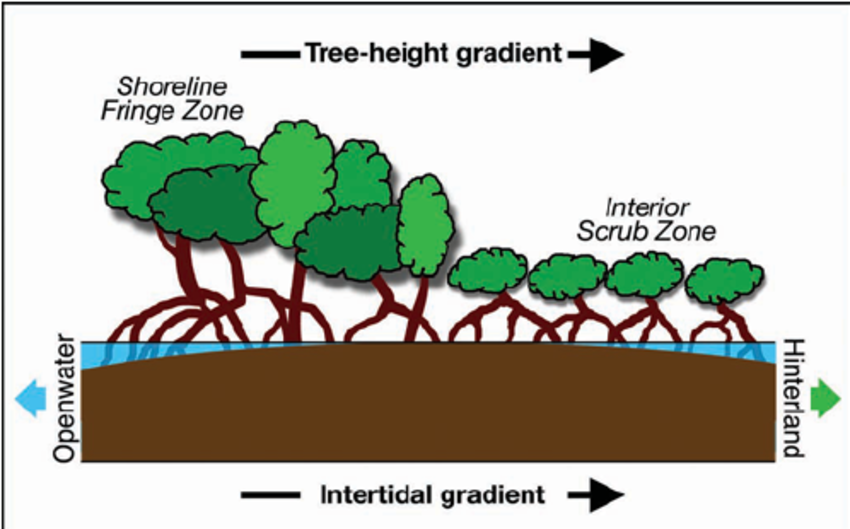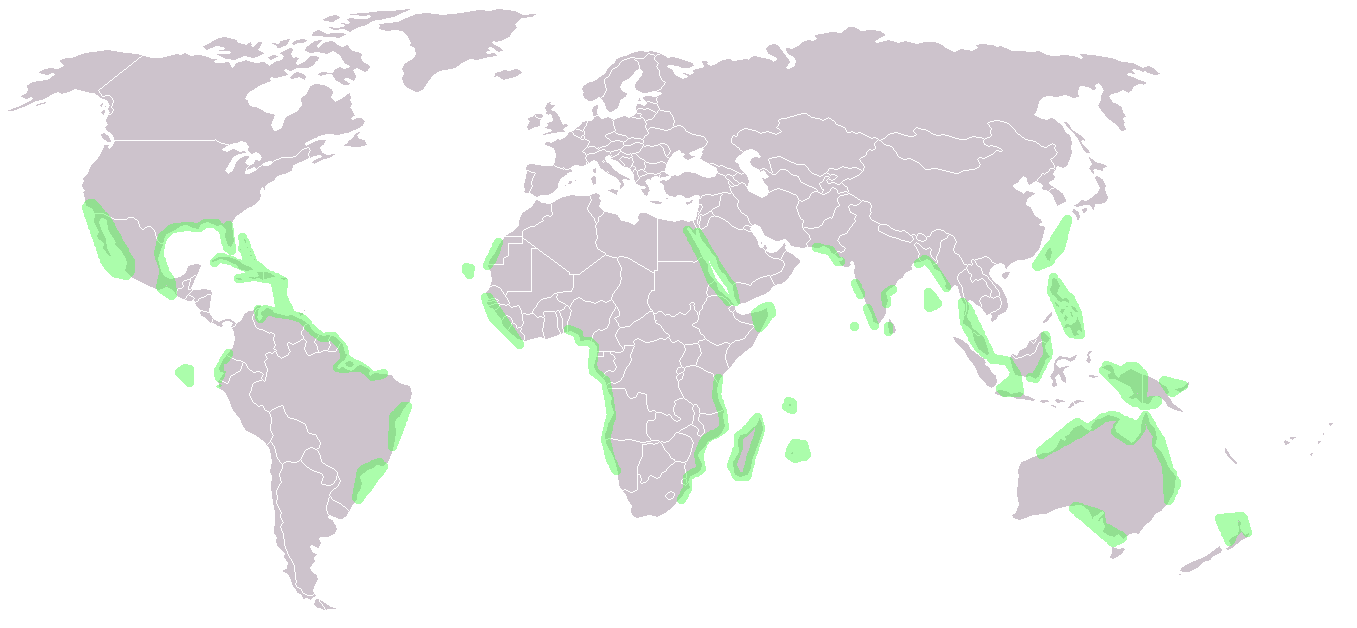Mangroves
Geography
Mangroves
What are mangroves and where do they naturally grow?
Mangroves are a group of trees (roughly 80) that grow on the coast, in the water of the intertidal zones. They are very resistant to the harsh, salty conditions in these areas. They are found on coastlines in tropical and subtropical areas. Indonesia has the most mangroves in the world, followed by Brazil, Malaysia, Papua New Guinea and Australia.
2. Explain what 'the roots also act as buffers' mean in terms of protection from flooding and tsunami's
It can protect the land and cities nearby by acting as a ‘sea wall’ of sorts. Their roots can trap and/or slow the tidal waters allowing more time for people to evacuate or preventing the flood/tsunami from ever reaching inhabited areas.
3. What 'death rate comparison' can be made over their effectiveness after the 2004 Asian Tsunami?
The 2004 Asian Tsunami helped to highlight the importance of mangrove forests when it came to protection from tsunamis. Only 2 people died in a village which still had dense mangrove forests, however 6000 died in a similar one that had lost its vegetation. This proves that mangroves are effective ways of protecting against floods and tsunamis.
4. Outline what is being done to resolve the problem caused by mangrove removal.
Scientists have started with ecological mangrove restoration, matching the right type of trees to the area, which has had far better results. A mix of native trees and animals will allow for the mangrove system to grow further as it is more diverse.
5. How is the removal of mangroves also linked to coastal erosion?
When mangrove forests are removed, their protection is gone too. All of a sudden, the land is exposed to the sea and flooding will be far more common. The roots of mangrove trees help to trap sediment which reduces erosion, but once they are gone, the sediment will disappear too, leading to rapid erosion and a quickly retreating shoreline.
Values:
Provide food and clean water
Help with climate regulation
Protect communities from tsunamis/floods
Regulate soil composition
Stabilise ecosystems
Improve water quality by filtering pollutants
Reduce coastal erosion
Habitat for birds, mammals, crustaceans and fish
Threats:
The tourism industry (tourists who walk off paths, light fires, feed the wildlife, collect shells and plants, etc.)
Pollution from fertilisers and pesticides from nearby farms
Improper and irresponsible disposal of wastes
Climate change (rise in sea temperatures, CO2 and sea level rise)
Coastal development (new cities built on/near mangrove swamps)
Deforestation for fuel/materials

